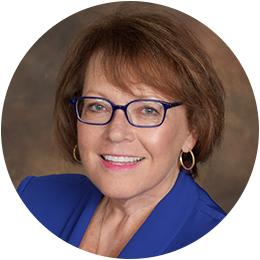
I was reading an article recently in Modern Healthcare where Michael Dowling, CEO of Northwell Health (based in Hyde Park, NY) was interviewed about his career. I loved his quote about what advice he would give to other executives: “My view is when the door opens – and I tell staff this all the time – jump through it. Just because you don’t know what might happen doesn’t mean you shouldn’t follow. Don’t be risk-averse.”
I have been thinking recently about the field of credentialing and privileging and how it is changing (I just did a presentation last week on how the processes related to credentialing/privileging for telehealth has changed). Some of the questions that were asked by the group (which was quite a diverse group – some Medical Services Professionals, others representing large healthcare organizations) were focused on how to avoid risk. For example, if an organization chooses to use “credentialing by proxy” for telehealth credentialing, what about FPPE? Will the Joint Commission accept using the FPPE from the distant site (the site where the provider is and where he/she is credentialed)? Is it possible to guarantee that there will never be an accreditation citation?
As many of you know, credentialing by proxy was authorized by the CMS (Centers for Medicare and Medicaid Services) in 2011, so this is still fairly new to the industry. Credentialing by proxy was authorized in order to provide a more cost-effective, less duplicative way of authorizing telemedicine practice. According to surveys that have been conducted, most organizations do not use credentialing by proxy but continue to do their own credentialing of each provider. Why? In my experience, many organizations wait to institute new processes such as credentialing by proxy until there are a significant number of other organizations that have done so and have experienced no issues – whether from accrediting bodies, state licensing authorities or other potential areas where some risk could exist.
In our current healthcare environment, totally avoiding risk is almost impossible. For example, the use of technology has opened avenues that have not yet been addressed by licensing authorities or accreditation bodies. For example, when electronic credentialing and the use of online applications were introduced, some organizations continued to use paper applications because they were concerned about who could actually complete an online application (i.e., what if the provider shared his/her password and the application was completed by someone else?). But we all know that paper applications can (and are) completed by a provider’s surrogate all the time, so the fact that applications became electronic really doesn’t change anything. Another example is the use of credentialing information that will soon be available via blockchain. I foresee that some organizations will wait to embrace the use of this new technology until it has been proven to be “safe.”
So what do we do? Should we always be the first to try something new?
My advice is when something new/innovative is being contemplated, consideration of the risks – and also how to mitigate them is prudent. We need to think about what it is that we are trying to accomplish and the steps that we take to assure that we keep patients safe. And when we are very deliberate about keeping patients safe (rather than just checking off that we met an accreditation standard) – we should be able to articulate and defend the decisions we have made in a way that shows our intention of embracing innovation while balancing concerns related to patient safety. But we can’t always wait to step off the curb until someone assures us that there is absolutely no risk.
In today’s world, we need to think about what we need to accomplish vs. always clinging to what we know. Implementing innovative ideas and processes may be one of the defining factors of how successful we are today and in the future as organization leaders. Back to Michael Dowling. He said, “That’s what innovation is all about – people taking risk.”
